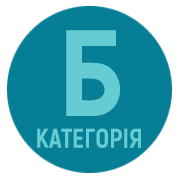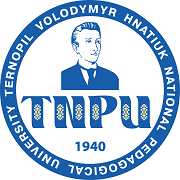LEXICAL DIVERSITY IN SELECTED 18TH CENTURY ENGLISH NOVELS
Keywords:
lexical diversity, lexical richness, vocabulary richness, lexical variation, type token ratio, lexeme token ratio, early novels in EnglishAbstract
This article deals with the problem of lexical diversity measured in selected works by Samuel Richardson, Henry Fielding and Laurence Sterne. The three au- thors represent different literary styles. Their novels were written during the same historical period, so this comparison is reasonable. Lexical diversity was measured using TTR (Type Token Ratio) as well as LTR (Lemma Token Ratio) on normalized samples from 6 novels. The results indicate that Laurence Sterne’s style is the most diverse in terms of the feature under analysis. Regarding the other two authors, Samuel Richardson’s works involve a slightly higher level of lexical diversity than Henry Fielding’s; however, the difference between the two authors is small. Addition- ally, the results do not reveal any crucial proportional dissimilarities between TTR and LTR scores and more research is needed to address this issue.
References
Klee, T. Developmental and diagnostic characteristics of quantitative measures of children’s language production. “Topics in Language Disorders” 12(2), 1992, pp. 28–41.
Snow, C. E. Change in child language and child linguistics. In: Coleman, H., Cameron, L. (eds.) Change and Language, Clevedon: Multilingual Matters, 1998, pp. 75–88.
Durán, P., Malvern, D., Richards, B., Chipere, N. Developmental trends in lexical diversity. “Applied Linguistics” 25(2), 2004, pp. 220–242.
Johansson, V. Lexical diversity and lexical density in speech and writing: a developmental perspective. “Working Papers in Linguistics” 53, 2009, pp. 61–79.
Broeder, P., Extra, G., van Hout, T. Measuring lexical richness and diversity in second language research. “Polyglot” 8, 1986, pp. 1–16.
Johansson, V. Word frequencies in speech and writing: a study of expository discourse. In: Working Papers in Developing Literacy across Genres, Modalities, and Languages, vol. I, Tel Aviv, 1999, pp. 182–198.
Lieven, E. V. Conversations between mothers and young children: individual differences and their possible implication for the study of language learning. In: Trott, K., Dobbinson, S., Griffiths, P. (eds.) The Child Language Reader, London and New York: Routlege, 2004, pp. 11-20.
Bates, E., Bretherton, I., Snyder, L. From First Words to Grammar: Individual Differences and Dissociable Mechanisms, 20, Cambridge: Cambridge Universi- ty Press, 1991.
Hess, C. W., Haug, H. T., Landry, R. G. The reliability of type-token ratios for the oral language of school age children. «Journal of Speech, Language, and Hearing Research» 32(3), 1989, pp. 536–540.
Guiraud, P. Problèmes et Méthodes de la Statistique Linguistique. Presses Universitaires de France, 1960.
Carroll, J. B. Language and Thought. Englewood Cliffs, NJ: Prentice-Hall, 1964.
Herdan, G. Type-token Mathematics, vol. 4., Mouton, 1960.
Sichel, H. S. Word frequency distributions and type-token characteristics. “Mathematical Scientist” 11(1), 1986, pp. 45–72.
McCarthy, P. M., Jarvis, S. Vocd: a theoretical and empirical evaluation. “Language Testing” 24(4), 2007, pp. 459–488.
D. Crystal, Profiling Linguistic Disability, London: Edward Arnold, 1992.
Daller, H., van Hout, R., Treffers-Daller, J. Lexical richness in the spontaneous speech of bilinguals. “Applied Linguistics” 24(2), 2003, pp. 197–222.
Fradis, A., Mihailescu, L., Jipescu, I. The distribution of major grammatical classes in the vocabulary of Romanian aphasic patients. “Aphasiology” 6(5), 1992, pp. 477–489.
Read, J. Assessing Vocabulary. Cambridge: Cambridge University Press, 2000.
Malvern, D. D., Richards, B. J., Chipere, N., Durán, P. Lexical Diversity and Language Development. Houndmills, Hampshire UK: Palgrave Macmillan, 2004.
Tweedie, F. J., Baayen, R. H. How variable may a constant be? Measures of lexical richness in perspective. “Computers and the Humanities” 32(5), 1998, pp. 323–352.
Strömqvist, S., Johansson, V., Kriz, S., Ragnarsdottir, H., Aisenman, R., Ravid, D. Toward a cross-linguistic comparison of lexical quantain speech and writing. “Written Language & Literacy” 5(1), 2002, pp. 45–67.
Le Normand, M.-T., Parisse, C., Cohen, H. Lexical diversity and productivity in French preschoolers: developmental, gender and sociocultural factors. “Clinical Linguistics & Phonetics” 22(1), 2008, pp. 47–58.
Halliday, M. A. Spoken and Written Language. 1989.
Ure, J., Ellis, J. Register in descriptive linguistics and linguistic sociology. In: Uribe-Villegas, O. (ed.) Issues in Sociolinguistics, The Hague: Mouton, 1977, pp. 197–243.
Sadeghi, K., Dilmaghani, S. K. The relationship between lexical diversity and genre in Iranian EFL learners’ writings. “Journal of Language Teaching and Re- search” 4(2), 2013, pp. 328-334.
Watt, I. P. The Rise of the Novel: Studies in Defoe, Richardson and Fielding. Berkeley and Los Angeles, California: University of California Press, 2001.
Python Software Foundation, Python Language Reference (version 3.4.3) [computer software], 2016.
Bird, S., Klein, E., Loper, E. Natural Language Processing with Python. O’Reilly Media, Inc., 2009.
Hüning, M. TextSTAT — Simple Text Analysis Tool (version 3.0) [computer software]. Berlin: Freie Universität, 2015.
R Development Core Team, R: A Language and Environment for Statistical Computing (version 3.0.3) [computer software]. Vienna, Austria, 2013.










